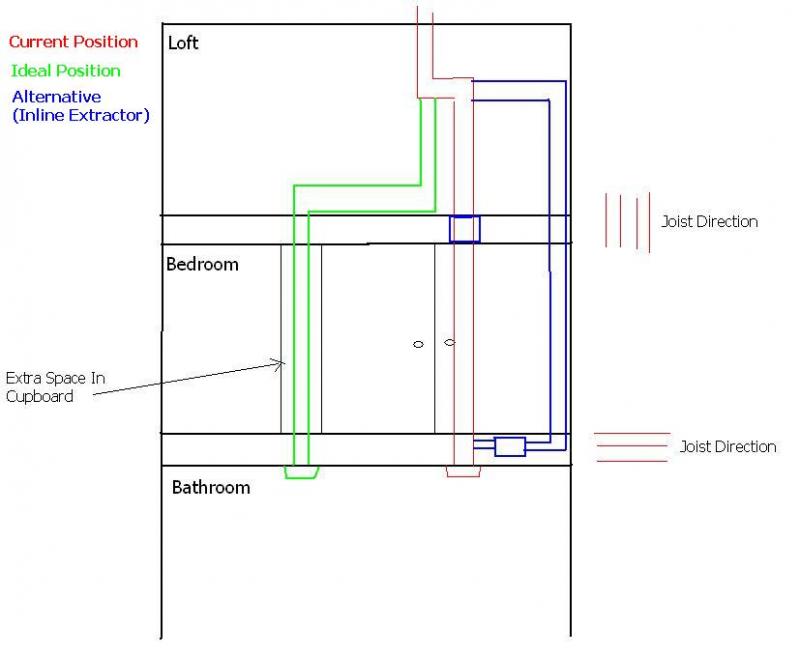Hi Everyone, this is my first post so be gentle. I have recently bought a 3 story house and I am in the process of doing it up. The bathroom is on the middle floor with a bedroom above it.
The bathroom has an old style box extractor fan and the ducting from this is a piece of stack pipe that runs up through the cupboard in the bedroom; which is annoying because it is not nicely in the corner of the cupboard. I have attached a rough drawing of the layout.
Ideally I would like to move the ducting so it is more in the corner or to the other cupboard which has a bit of extract space to one side but this would mean unnecessary bends or the extractor would be next to the bathroom door.
so my questions are:
1. Does any one have a solution to my problem
2. I haven been looking at the inline extractors but the only place I can see it going is in the loft which is 3.4m above the bathroom. is this two far to provide enough suction? I can't find any information on the maximum distance one can be placed.
The bathroom has an old style box extractor fan and the ducting from this is a piece of stack pipe that runs up through the cupboard in the bedroom; which is annoying because it is not nicely in the corner of the cupboard. I have attached a rough drawing of the layout.
Ideally I would like to move the ducting so it is more in the corner or to the other cupboard which has a bit of extract space to one side but this would mean unnecessary bends or the extractor would be next to the bathroom door.
so my questions are:
1. Does any one have a solution to my problem
2. I haven been looking at the inline extractors but the only place I can see it going is in the loft which is 3.4m above the bathroom. is this two far to provide enough suction? I can't find any information on the maximum distance one can be placed.


